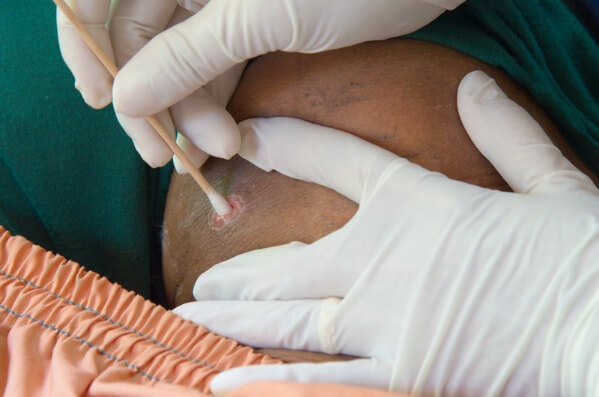The Important Part Nurses Play in Wound Care
Nurses who specialize in wound care are dedicated to treating the most difficult, non-healing wounds. About half of patients who develop a diabetic foot ulcer will die within five years, according to the Journal of American Podiatric Medical Association.
That figure increases to 74 percent for those who end up having a lower leg amputation.
The saddest part? Most of those amputations that are preventable. What’s scary is that the public seems to be generally unaware that death rate for diabetic foot ulcers and amputations is much higher than well known illnesses like breast and prostate cancer. A diabetic wound can indeed become a death sentence.
Needless to say, wound care is serious business.
Nothing is simple about wound care; there are a lot of moving parts. It’s more than just directly caring for wounds via dressing them or removing damaged or infected tissue from the area.
On average, it can take a few weeks up to a couple months for wounds to heal Many factors can impact the treatment.
Is the wound infected? If so, how bad is it? Because it can make the wound bigger and take longer to heal.
Was it caused from too much friction on the skin, pressure on the skin or moisture on the skin? Depending on the answer, the methods to care will vary.
Is the patient obese? Because that increases the risk of infection after surgery. Do they have diabetes? Because it’s more likely that the patient will have a chronic wound that won’t heal.
Poor blood flow, heavy alcohol drinking, being on medication and living a stressed lifestyle with too little sleep or poor diet can all have a negative impact.
When patients have pressure ulcers, nurses incorporate medical equipment including calf risers, cushions, and seating elevations.
They must emphasize nutritional needs.
If patients have venous insufficiency, nurses must get the patient to maximal safe compression swiftly to address swelling caused by edema. Then we’ve got to drill it into the patient’s head just how important a compression regimen is, particularly for chronic wounds and lower extremity diabetic ulcers. Getting the patient to wear their compression garments means you need compliance from the patient, and if possible, the support of loved ones/care takers to help them honor that commitment.
Unfortunately, sometimes there’s very little collaborative effort, if any between nurses and primary care providers in the same hospital, never mind those in other specialties or those providing home care to the patient. Different departments may have different approaches to dressing formularies. Patients may end up waiting too long to be seen by real wound care specialists while visiting clinicians who aren’t trained.
In spite of these difficulties, wound care providers power through it all to get to the goal. Nothing is more rewarding than seeing a wound heal so you can sees the patient can get up and get back to the life they want to live. As trite as it may sound, healing people makes all the unpleasant parts of the job worthwhile. We all want to be able to send a patient home at the end of the day right?
If you’d like to sharpen your wound care skills, or if you’re a healthcare provider in need of contact hours, be sure to check out CEUfast’s 4 part Wound Care series, where you will cover everything from risk factors and diagnosis to treatment. Each course is worth 1 (one) contact hour each, totalling 4 (four) contact hours: https://ceufast.com/course/wound-series-part-1-assessing-and-diagnosing-chronic-wounds-of-the-lower-extremity
LINKS:
http://www.webmd.com/skin-problems-and-treatments/tc/pressure-sores-topic-overview
http://www.niddk.nih.gov/about-niddk/strategic-plans-reports/Documents/Diabetes%20in%20America%202nd%20Edition/chapter18.pdf




